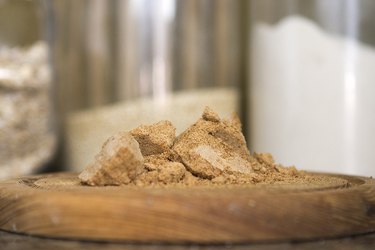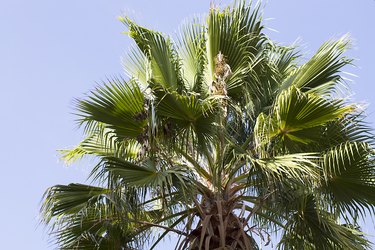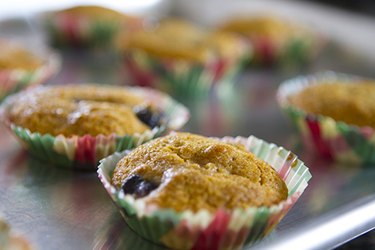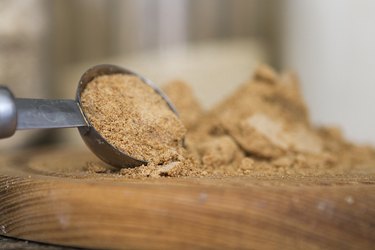
For centuries, Asian countries have concentrated the sap of palm trees to make a sweetener for culinary and medicinal purposes. The sugar is drawn from two types of palm, the palmyra and the familiar coconut palm. Coconut palm sugar has attracted a great deal of interest since the late 20th century for its low glycemic index and high levels of micro-nutrients. It also can be substituted directly for cane sugar in baking.
About Coconut Palm Sugar
Video of the Day

Coconut palm sugar is produced by tapping the tree's blossoms for sap. This process kills the blossoms and prevents the tree from growing coconuts for that season. The sap is concentrated down to a syrup. Then the syrup is further evaporated to form sugar. It is available in three market forms -- a thick paste similar to creamed honey; small cakes of hard compressed sugar; and granulated, ready-to-use sugar, similar in appearance to conventional brown sugar.
Video of the Day
Benefits of Using Coconut Palm Sugar

One of the primary factors driving palm sugar's recent surge in popularity is its low glycemic index. This is a measure of how a food is absorbed by the body, and more specifically to what degree it causes blood sugar to spike. Testing by the Philippine government's Department of Science and Technology determined that coconut sugar has a glycemic index of 35, well below the low benchmark of 55. It is also a significant source of several minerals, including phosphorus, calcium, magnesium and iron.
Use in Baking

Coconut palm sugar is a versatile substitute for conventional cane sugar for most baking purposes. It is less sweet than cane sugar but more flavorful, with a molasses-like flavor similar to brown sugar, and in many cases the quantity of sugar can be reduced by up to 25 percent without altering the end result. Use the paste form of cane sugar to sweeten batters and doughs that don't require creaming. The hard cakes can be grated for use or pounded with a mallet to break them into powder. Once reduced to powder, the sugar is interchangeable with granulated palm sugar or cane sugar.
Additional Considerations and Tips

Coconut palm sugar has a more-rounded flavor than cane sugar, with distinct caramel and butterscotch notes. However, it's produced on a small scale and can be quite variable. For consistency's sake, stick with one brand whenever possible. If you want to reduce the amount of sugar in your baked goods, cut back the recipe by 1 tablespoon of palm sugar each time until the flavor is affected. Compensate for a reduced amount of sugar by creaming the fat and sugar longer.